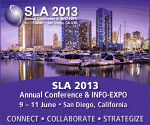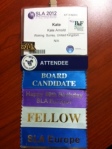Living and working in London it’s easy to walk past an area or building and not realise its history or what it contains, and thus to miss a hidden gem. This realisation came to me recently after undertaking a walking tour of Waterloo Station and its environs (Behind the termini: wonderful Waterloo) and listening to a talk on The Society Of Friends library and archive collection.
I’ve commuted daily in and out of Waterloo for some 20 years now, but I wasn’t aware there had been seven stations there at one time, and one of them was the Station of the Dead. I also didn’t know that under the tracks on Leake Street is a public graffiti tunnel initially created during the ‘Cans Festival’ organised by Banksy in May 2008. I’m looking forward to doing some of the other behind the termini tours in this programme, led by Rachel Kolsky, to learn more about our major London stations.
Gresham College is running a series of lectures entitled ‘Special Collections’ focussing on some of the hidden gems of interesting and unique collections in London. The series covers eight very different collections ranging from Lambeth Palace’s library to the collection of anatomy at St Bartholomew’s hospital. All the lectures are free to attend, and the college makes transcripts and recordings of the talks available on their website. Here’s a list of the collections covered in this series:
Anatomy Museums (September 2012)
The Guildhall Library (October 2012)
British Architectural Library, RIBA (November 2012)
The Library and Archives of the Society of Friends (January 2013)
New Scotland Yard Crime Museum (April 2013)
Lambeth Palace (March 2013)
The Royal Horticultural Society’s Lindley Library (May 2013)
St. Paul’s Cathedral (June 2013)
David Blake, Head of Libraries and Archives at The Society of Friends, gave an interesting and engaging talk on the history of the Quakers and illustrated it with materials held by the Library. I was impressed the Library was founded in August 1673 and that early on it was decided that it should acquire two copies of everything written by Quakers; plus one copy of everything written in opposition to them, the ‘adverse collection’. In the early 1700s the Society was thinking about disaster planning with the purchase of bags to carry materials out of the building in case of fire. Further inventiveness was displayed by the provision of a card catalogue on wheels which could be put away in the strongroom overnight as until 1926 there was no permanent reading room at the Society. This all changed in 1926 with the move to Friends House, opposite Euston Station where the Library is now. Amongst the hidden gems in the collection are the Nobel Peace Prize medal awarded in 1947 and the Winchester Whisperer, a clandestine newsletter produced by conscientious objectors in Winchester Prison, written on toilet paper.



